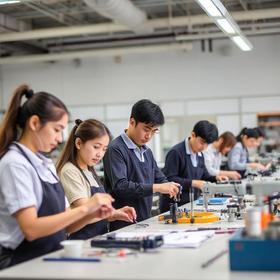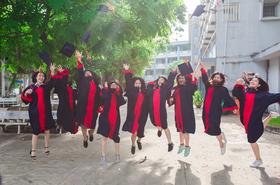School Highlights
Pima Medical Institute-Colorado Springs serves 363 students (100% of students are full-time).
The college's student-teacher ratio of 10:1 is lower than the state community college average of 23:1.
Minority enrollment is 93% of the student body (majority Black), which is more than the state average of 51%.
Quick Facts (2025-26)
- Enrollment: 363 students
- Acceptance Rate: 50%
- Student-teacher ratio: 10:1
- Minority enrollment: 93%
- Source: Integrated Postsecondary Education Data System (IPEDS)
Top Rankings
Pima Medical Institute-Colorado Springs ranks among the top 20% of public schools in Colorado for:
Category
Attribute
Selectivity
Completion Rates
School Overview
Pima Medical Institute-Colorado Springs
(CO) Community College Avg.
Carnegie Classification
Not applicable, not in Carnegie universe (not accredited or nondegree-granting)
Baccalaureate/Associate's Colleges: Mixed Baccalaureate/Associate's
Institution Level
At least 2 but less than 4 years
At least 2 but less than 4 years
Institution Control
Private for-profit
Private, non-profit
Total Faculty
n/a
92 staff
Student Body
The student population of Pima Medical Institute-Colorado Springs has declined by 45% over five years.
The student-teacher ratio of 10:1 has decreased from 45:1 over five years.
The Pima Medical Institute-Colorado Springs diversity score of 0.65 is less than the state average of 0.69. The school's diversity has grown by 18% over five years.
Total Enrollment
363 students
2,252 students
Student-Teacher Ratio
10:1
23:1
# Full-Time Students
363 students
743 students
# Part-Time Students
n/a
1,509 students
# Enrollment Undergraduate
n/a
185 students
# Full-Time Undergraduate Students
363 students
536 students
# Full-Time Graduate Students
n/a
95 students
# Part-Time Undergraduate Students
n/a
1,509 students
Total Dormitory Capacity
n/a
307 students
% American Indian/Alaskan
3%
1%
% Asian
10%
6%
% Hispanic
1%
25%
% Black
30%
6%
% White
7%
49%
% Hawaiian
48%
3%
% Two or more races
1%
4%
% Non Resident races
n/a
2%
% Unknown races
n/a
4%
Diversity Score
0.65
0.69
College Completion Rate (Students who graduate in less than 4 years)
69%
64%
College Completion Rate (Students who graduate in 4 years or more than 4 years)
n/a
27%
Average Graduate Earnings (10 Years)
$29,800
$33,300
Tuition and Acceptance Rate
% Students Receiving Some Financial Aid
83%
83%
Median Debt for Graduates
$9,499
$10,213
Median Debt for Dropouts
$4,176
$4,823
Acceptance Rate
50%
98%
Source: 2024 (or latest year available) Integrated Postsecondary Education Data System (IPEDS) , School Administrators
School Notes
- Sample of notable school alumni/alumnae:
- John Smith - Nobel Laureate in Medicine, Graduated in 2001 -
- Jane Doe - CEO of HealthCorp, Graduated in 2005 -
Frequently Asked Questions
What is the acceptance rate of Pima Medical Institute-Colorado Springs?
The acceptance rate of Pima Medical Institute-Colorado Springs is 50%, which is lower than the state average of 98%. Pima Medical Institute-Colorado Springs's acceptance rate is ranked among the top community colleges in Colorado with low acceptance rates.
Who are famous alumni from Pima Medical Institute-Colorado Springs?
Pima Medical Institute-Colorado Springs famous alumni include: John Smith - Nobel Laureate in Medicine, Graduated in 2001 and Jane Doe - CEO of HealthCorp, Graduated in 2005.
What is Pima Medical Institute-Colorado Springs's ranking?
Pima Medical Institute-Colorado Springs ranks among the top 20% of community college in Colorado for: Lowest acceptance rates, Average community college minority breakdown and Highest completion rates.
Recent Articles

The Rise of Technical and Vocational Training in 2025
Explore the 2025 surge in technical and vocational training—enrollment, policy, costs, and why this path is gaining ground for students and parents.

Stackable Credentials: How Community Colleges Advance Careers
Discover how community colleges use stackable credentials to build career pathways, boost earnings, and enable lifelong learning in 2025.

High-Paying Jobs You Can Get with a Community College Degree
Discover top high-paying careers you can launch in 2025 with a community college (associate) degree and high-growth credentials in tech, healthcare and trades.





